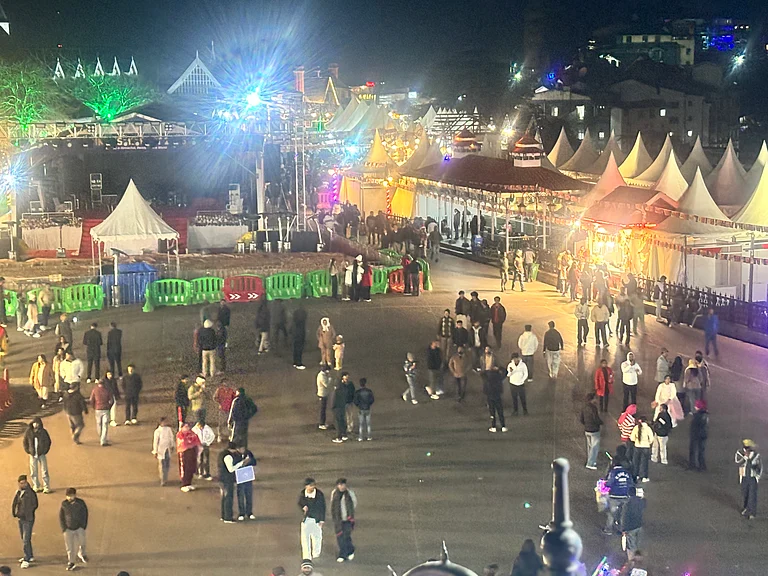Ramman Festival, Uttarakhand
Up in the Himalaya, in the twin villages of Saloor-Dungra (Uttarakhand), local people celebrate a festival called Rammam in honour of the presiding deity Bhumiyal Devta. Consisting of a complex set of rituals, including reciting from the Ramayana and holding masked dances, the participatory roles are divided among all the castes and occupational groups. For example, Brahmins lead the prayer; Bhandaris of the Kshatriya caste enjoy the right to wear the most sacred masks, including that of Narasimha; young and old alike join in the dancing. The multiform cultural event, which ‘reflects the environmental, spiritual and cultural concept of the community, recounting its founding myths and strengthening its sense of self-worth’, was inscribed on UNESCO’s Representative List of the Intangible Cultural Heritage of Humanity in 2009. Usually, the festival is held in late April.
Getting there
Saloor-Dungra is 10 kms from Joshimath, a key transport hub in the Garhwal Himalayas. Get off at the village roadhead, hike for 30 minutes and you’ll reach the Bhumiyal Temple. Enjoy Ramman all day, and inform your driver in advance for an evening pickup
Mannarsala Sree Nagaraja, Kerala
Did you know that in Kerala, a state which grabbed the headlines over a controversy regarding the entry of women of reproductive age into the Sabarimala Temple, the position of the head priest in the Mannarsala Sree Nagaraja temple is occupied by a woman? Lying within a sacred grove, the temple is dedicated to the King of the Snakes (Nagaraja). Although the beginning of the custom is rooted in legends, it is said the position goes to the eldest female member of the Brahmin family whose predecessor had given protection to some snakes distressed in a forest fire. The forest surrounding the temple is also protected as it is considered the abode of living snakes.
Getting there
The temple is located about 3 kilometers to the north-east of the bus station along NH66 at Haripad, in Alappuzha district of Kerala. If you are traveling from Kochi or Thiruvananthapuram by train, get off at Haripad station and take an auto rickshaw.
Dargah for Sea Voyages, Nagore, Tamil Nadu
Down south, in Tamil Nadu, since the 16th century, sailors and people making a sea voyage have been known to seek the blessings of Nagore Andavar. Lying in the heart of the coastal town of Nagore is the dargah dedicated to the 16th century Sufi saint Syed Shahul Hameed or Nagore Andavar. He settled here with his followers after a king of Thanjavur donated a large parcel of land to him when the saint cured the ruler of an illness. The saint who breathed his last in Nagore was buried here and a mausoleum built over the grave, the money for which mainly came from his Hindu followers. Of the five minarets or towers adorning the dargah, the tallest one is said to be built by an 18th century Maratha ruler of Thanjavur after the realisation of a boon. Even today, people of both faiths believe in the healing powers of the saint and come here to offer prayers.
Getting there
Nagore is about 10km from Puducherry (Pondicherry), so you can base yourself from the seaside town with a French touch


























